Abstract
Veterinary practitioners are often isolated from easy access to information in medical or hospital libraries, making necessary the use of a variety of information resources. A survey was conducted to assess the extent to which various information resources were used within the veterinary profession. Most responding veterinarians were small-animal practitioners who used the veterinary literature, colleagues, diagnostic laboratories, continuing education courses, association meetings, and pharmaceutical representatives as sources of information. Books and other practitioners were the preferred information source in critical-care situations, followed closely by diagnostic laboratories and journals. For keeping up-to-date with current advances in veterinary medicine, journals, books, other practitioners, and continuing education were used. University extension services, veterinary medical libraries, and computer applications to information use were not important resources ot most of the respondents. Many veterinarians indicated that they would use library services if they knew more about them. With the trend toward computerization in veterinary practice, it is possible for libraries to help reduce the information isolation of many veterinary practices.
Full text
PDF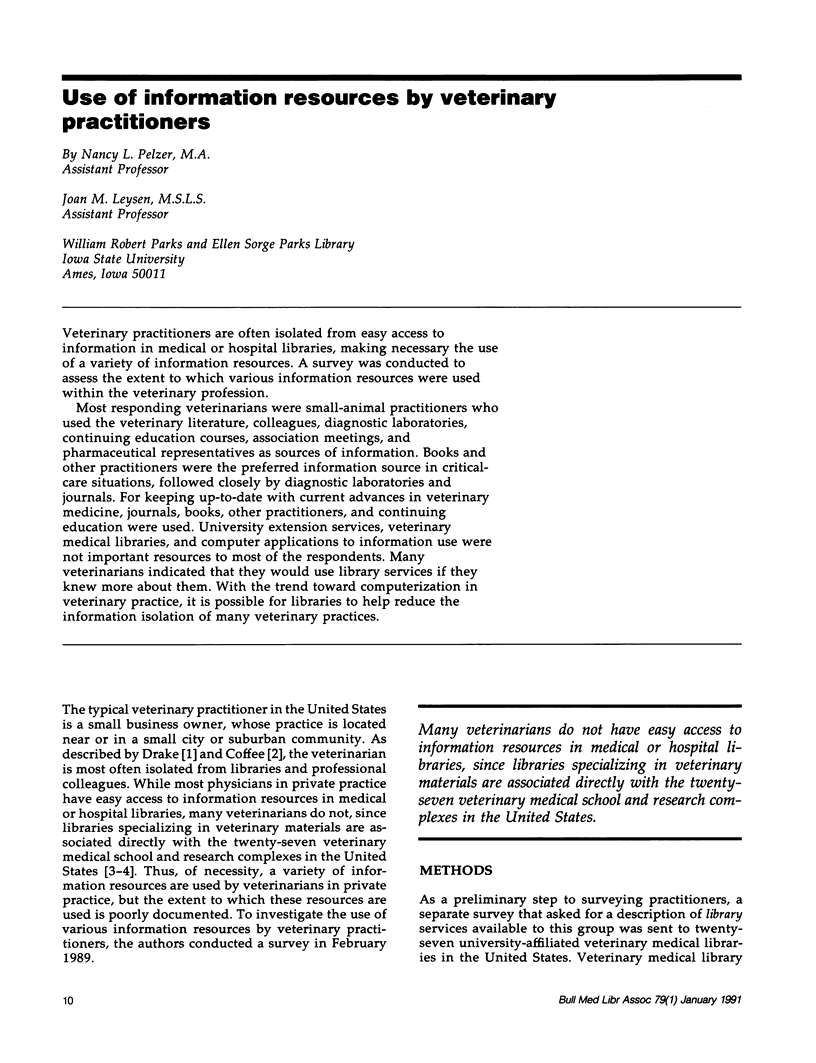
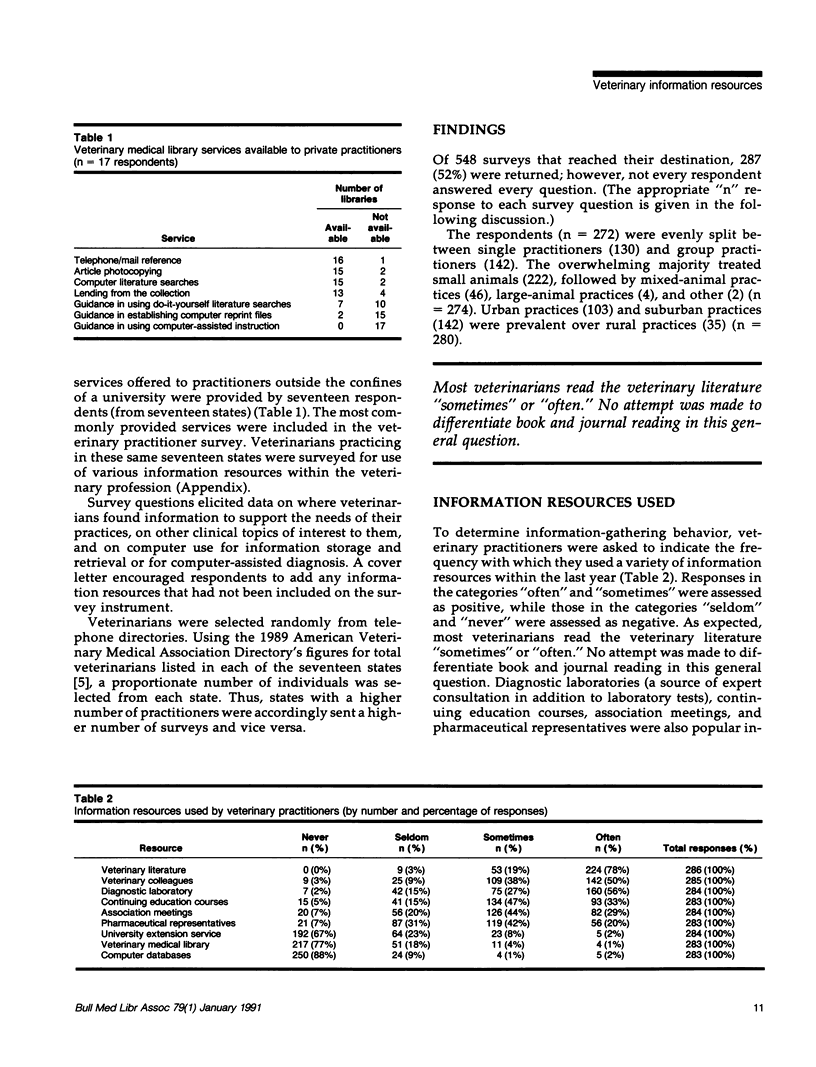
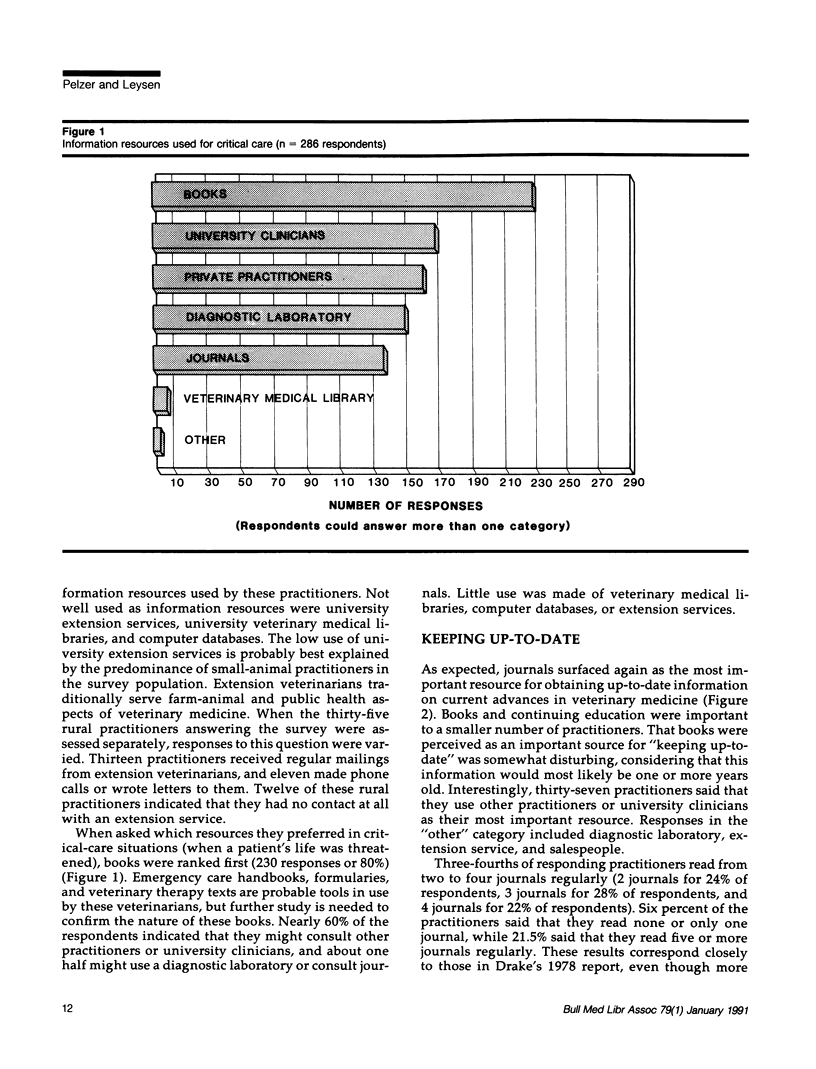

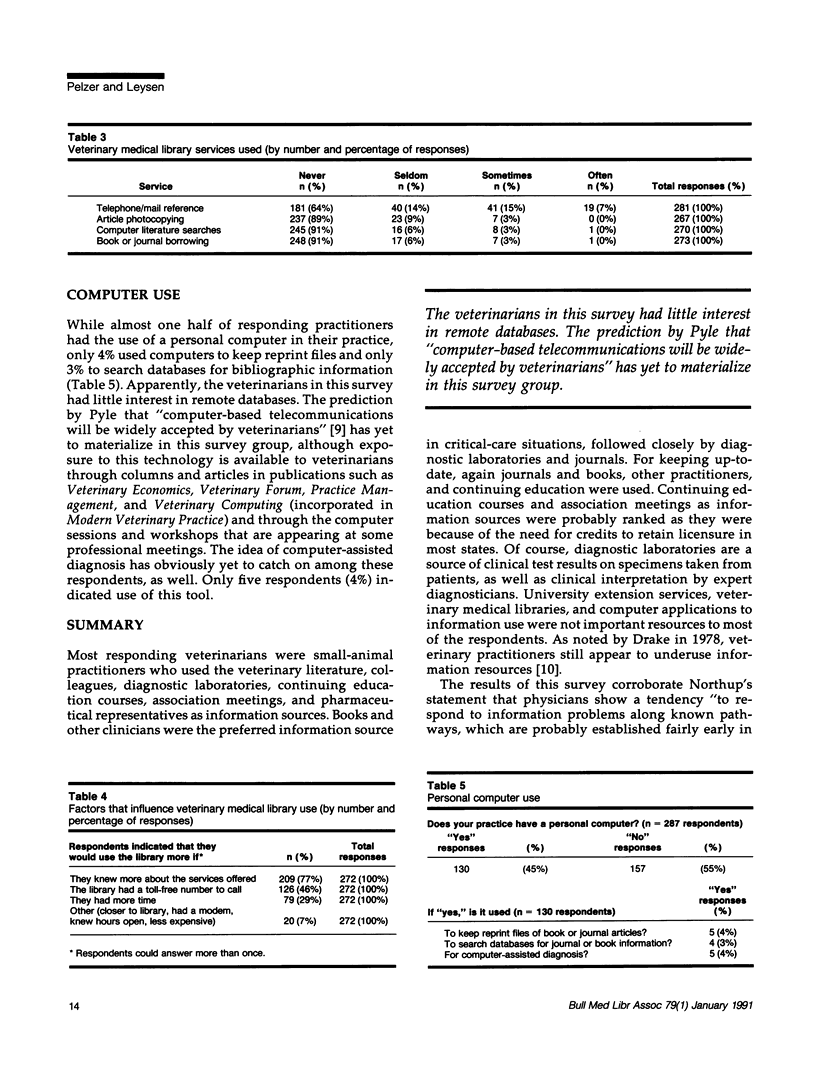
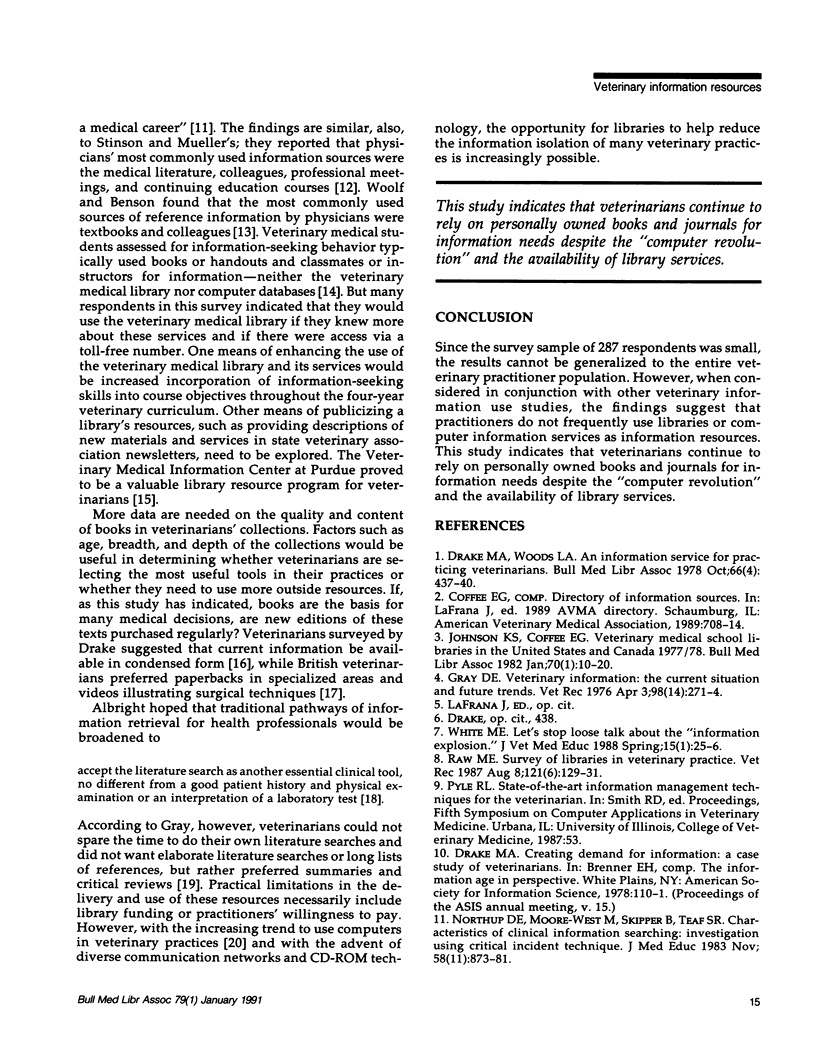
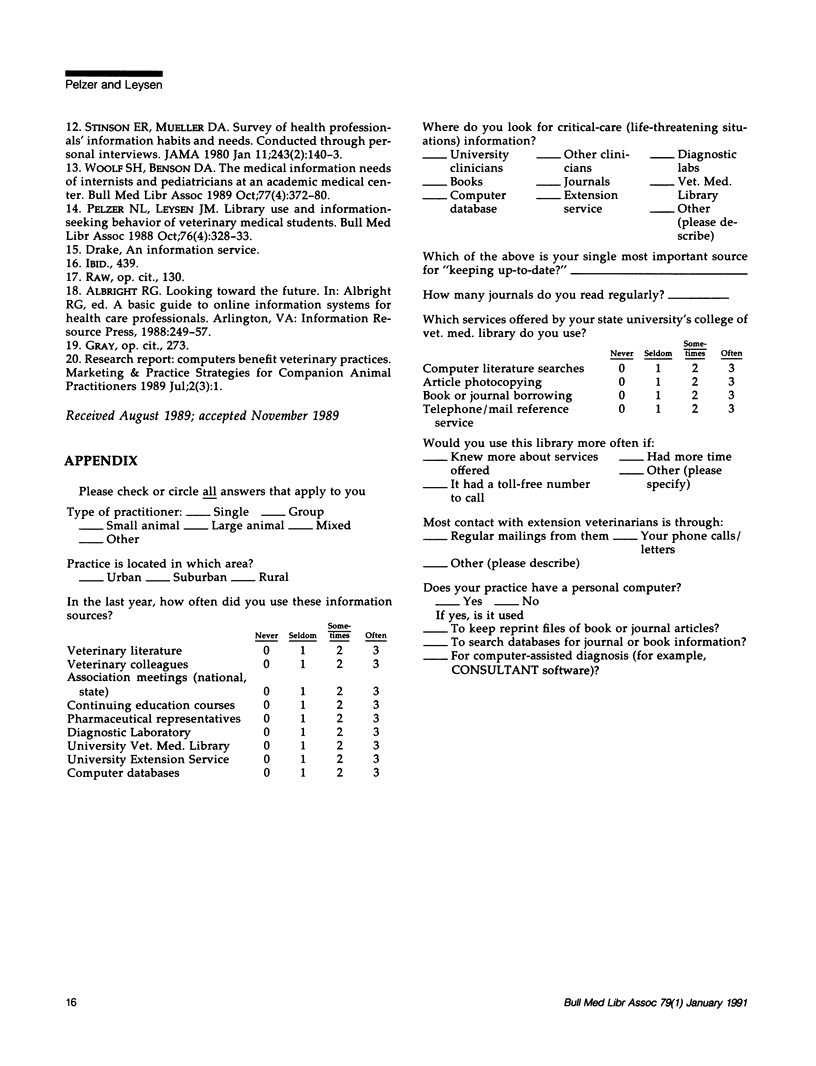
Selected References
These references are in PubMed. This may not be the complete list of references from this article.
- Drake M. A., Woods L. A. An information service for practicing veterinarians. Bull Med Libr Assoc. 1978 Oct;66(4):437–440. [PMC free article] [PubMed] [Google Scholar]
- Gray D. E. Veterinary information: the current situation and future trends. Vet Rec. 1976 Apr 3;98(14):271–274. doi: 10.1136/vr.98.14.271. [DOI] [PubMed] [Google Scholar]
- Johnson K. S., Coffee E. G. Veterinary medical school libraries in the United States and Canada 1977/78. Bull Med Libr Assoc. 1982 Jan;70(1):10–20. [PMC free article] [PubMed] [Google Scholar]
- Northup D. E., Moore-West M., Skipper B., Teaf S. R. Characteristics of clinical information-searching: investigation using critical incident technique. J Med Educ. 1983 Nov;58(11):873–881. [PubMed] [Google Scholar]
- Pelzer N. L., Leysen J. M. Library use and information-seeking behavior of veterinary medical students. Bull Med Libr Assoc. 1988 Oct;76(4):328–333. [PMC free article] [PubMed] [Google Scholar]
- Raw M. E. Survey of libraries in veterinary practice. Vet Rec. 1987 Aug 8;121(6):129–131. doi: 10.1136/vr.121.6.129. [DOI] [PubMed] [Google Scholar]
- Stinson E. R., Mueller D. A. Survey of health professionals' information habits and needs. Conducted through personal interviews. JAMA. 1980 Jan 11;243(2):140–143. [PubMed] [Google Scholar]
- Woolf S. H., Benson D. A. The medical information needs of internists and pediatricians at an academic medical center. Bull Med Libr Assoc. 1989 Oct;77(4):372–380. [PMC free article] [PubMed] [Google Scholar]


